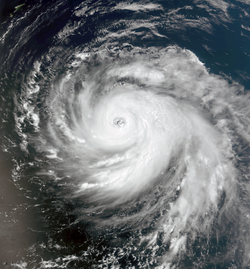From tomorrow's featured article
Heartburn is a burning sensation felt behind the breastbone. It is a symptom that is commonly linked to acid reflux and is often triggered by food, particularly fatty, sugary, spicy, chocolate, onions, citrus, and tomato-based products. Lying down, bending, lifting, and performing certain exercises can exacerbate heartburn. Causes include acid reflux, gastroesophageal reflux disease (GERD), damage to the esophageal lining, bile acid, mechanical stimulation to the esophagus, and esophageal hypersensitivity. Heartburn affects 25% of the population at least once a month. Endoscopy and esophageal pH monitoring can be used to evaluate heartburn. Some causes of heartburn, such as GERD, may be diagnosed based on symptoms alone. Lifestyle changes, such as losing weight and avoiding fatty foods, can improve heartburn. Over-the-counter alginates or antacids can help with mild or occasional heartburn. Heartburn treatment primarily involves H2 receptor antagonists and proton-pump inhibitors. (Full article...)
Did you know ...
- ... that Megalobulimus dryades (example pictured) is named after a kind of nymph from Greek mythology?
- ... that Bal Krishna Kaul, who served as the first Home and Finance minister of Ajmer State, undertook a 22-day hunger strike in Ajmer Jail?
- ... that 3.5% of a country's population can potentially change its government?
- ... that weightlifter Ri Suk, after returning from a four-year absence from competing internationally, then set eight world records in a single competition?
- ... that Shakira's Oral Fixation, Vol. 2 was only released in some Middle Eastern countries, and even then without the song "How Do You Do", which was deemed blasphemous?
- ... that Freddie Parker and Don King each played one game for the Green Bay Packers as replacement players in 1987 before being injured and never playing in the NFL again?
- ... that the first volume of Felix Klein's books on the history of mathematics does not mention the three women who originally transcribed his lectures?
- ... that some of the interior decoration of the Ernst-Haeckel-Haus is inspired by jellyfish?
- ... that, for many members of an online forum for mothers, Rupert Campbell-Black is "vaginally totemic"?
In the news (For today)

- Flooding in Central Texas (pictured), United States, leaves at least 120 people dead.
- Astronomers announce the discovery of 3I/ATLAS, an interstellar object passing through the Solar System.
- The Vera C. Rubin Observatory in Chile releases the first light images from its new 8.4-metre (28 ft) telescope.
- In basketball, the Oklahoma City Thunder defeat the Indiana Pacers to win the NBA Finals.
On the next day
July 13: Kashmir Martyrs' Day in Pakistan
- 1260 – Livonian Crusade: Samogitian forces defeated Teutonic knights and the Livonian Order at the Battle of Durbe.
- 1713 – Eight representatives of the Wabanaki Confederacy ratified the Treaty of Portsmouth, ending their hostilities against the British in Queen Anne's War.
- 1942 – World War II: The 1st Filipino Infantry Regiment was converted from a battalion to accommodate a larger number of volunteers spurred on by the Japanese invasion of the Philippines.
- 2013 – Typhoon Soulik (pictured) made landfall in East China and Taiwan, killing at least 20 people.
- 2020 – After a five day search, the body of American actress and singer Naya Rivera was recovered from Lake Piru, confirming her death.
- Wu Yuanheng (d. 815)
- Hubert Walter (d. 1205)
- Harrison Ford (b. 1942)
- Lamine Yamal (b. 2007)
Tomorrow's featured picture
 | The wood stork (Mycteria americana) is a large wading bird found in warmer parts of the Americas. North American birds may disperse to South America, where it is resident. Its bare head and neck are dark grey and the plumage is mostly white, with black on the tail and part of the wing. The sexes are similar, but the juvenile has a feathered head and a yellow, not black, bill. The wood stork nests colonially in wetlands, building its one-metre-diameter (3.3-foot) nest in trees; the breeding season starting when water levels drop. The clutch of three to five eggs is incubated for around 30 days, and the chicks fledge 60 to 65 days after hatching, although many die during their first two weeks. The chicks are fed fish while the adult also eats insects, frogs and crabs as available, foraging by touch in shallow water. This wood stork was photographed with a Yacare caiman in the Pantanal, Brazil. Photograph credit: Charles J. Sharp Recently featured: |
Other areas of Wikipedia
- Community portal – The central hub for editors, with resources, links, tasks, and announcements.
- Village pump – Forum for discussions about Wikipedia itself, including policies and technical issues.
- Site news – Sources of news about Wikipedia and the broader Wikimedia movement.
- Teahouse – Ask basic questions about using or editing Wikipedia.
- Help desk – Ask questions about using or editing Wikipedia.
- Reference desk – Ask research questions about encyclopedic topics.
- Content portals – A unique way to navigate the encyclopedia.
Wikipedia's sister projects
Wikipedia is written by volunteer editors and hosted by the Wikimedia Foundation, a non-profit organization that also hosts a range of other volunteer projects:
- Commons
Free media repository - MediaWiki
Wiki software development - Meta-Wiki
Wikimedia project coordination - Wikibooks
Free textbooks and manuals - Wikidata
Free knowledge base - Wikinews
Free-content news - Wikiquote
Collection of quotations - Wikisource
Free-content library - Wikispecies
Directory of species - Wikiversity
Free learning tools - Wikivoyage
Free travel guide - Wiktionary
Dictionary and thesaurus
Wikipedia languages
This Wikipedia is written in English. Many other Wikipedias are available; some of the largest are listed below.
- 1,000,000+ articles
- 250,000+ articles
- 50,000+ articles


 Français
Français Italiano
Italiano





